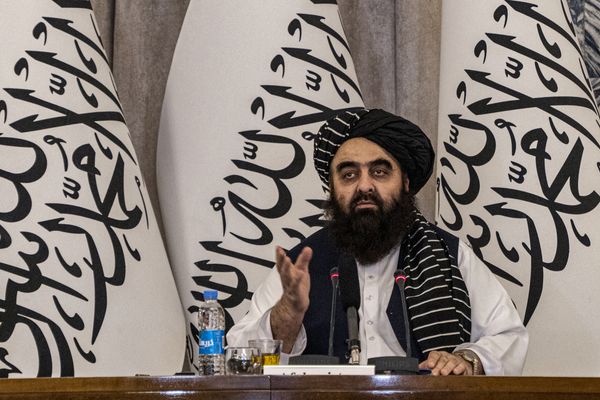
U.S. President Joe Biden has announced the full withdrawal of U.S. and coalition forces from Afghanistan by Sept. 11 this year. This policy has some in Washington banking on a windfall of freed-up money for other defense priorities.
Don’t count on it.
Leaving costs more than staying. The Department of Defense is seeking some new and plenty of ongoing investments in counterterrorism infrastructure in the region as a result of the pullout. Salaries and other expenses for roughly 300,000 members of the Afghan National Security Forces will endure.
Departing a country where U.S. forces, contractors, and government employees have been operating for 20 years is expensive. That’s to say nothing of the 8,000 other allied military troops in Afghanistan alongside the Americans. Not only is there a lot of property, buildings, and equipment, but there’s also a network of private entities that have been doing a large portion of the work there.
Breaking contracts struck with those players costs money. During the Iraq drawdown, the Army found that in some cases, it was cheaper to pay an existing contract to fulfillment rather than change or shorten it. Depending on how the contracts in Afghanistan are written, they could entail large penalties for amending or breaking them.
Getting equipment moved back home or somewhere else is also a big task. It will require more forces than are in the country now, which will not be free. Pentagon spokesman John Kirby has discussed the need for additional logistics, engineering, and force protection forces as the drawdown ensues. And Defense Secretary Lloyd Austin just approved the deployment of B-52 bombers to Afghanistan and is keeping the aircraft carrier USS Dwight D. Eisenhower in the Persian Gulf for additional force protection.
Yet labor is not the biggest contributor to cost. Location is.
In Iraq, military leaders found that materiel they would have otherwise returned home to the United States was left behind, because flying it home cost more than leaving it for the host nation’s security forces. And Iraq is a country with less harsh terrain and shorter distances to cover overall. There, Washington was able to find plentiful options for commercial trucking to move fully loaded equipment convoys from Iraq into Kuwait.
For Afghanistan, that outcome is unlikely, and its landlocked terrain is a challenge. Moving items by truck is much trickier given its location and availability of ports and airports nearby. Yet air and sealift would cost anywhere from two to five times as much as using a wheeled vehicle for transport, according to private conversations with comptrollers.
Not all assets and equipment will be redistributed around the region or back home. Some will have to be destroyed because it is not worth the cost to transport, it would not be used by the host nation, or the technology is too sensitive. To get a real sense of the costs of departing Afghanistan, planners will have to assess all the options and contingencies in detail. There will be under- and overestimated bills and costs that linger into the next fiscal year given the uncertainty.
For his part, Austin has said that, even with troops departing Afghanistan, the military will maintain counterterrorism capabilities in the region; they’ll just be repositioned elsewhere nearby. Secretary of State Antony Blinken echoed this point, stating the United States will “remain vigilant against any possibility that the threat of terrorism reemerges in Afghanistan. We’ll reorganize our counterterrorism capabilities to stay on top of that.”
Kirby, the Pentagon spokesman, weighed in on this reorganization recently, implying that funds recouped from the drawdown in Afghanistan “are resources now that can help us also apply to … refocusing on other threats and challenges.” The sentiment was echoed by Gen. Kenneth McKenzie, commander of U.S. Central Command, who told the House Armed Services Committee that he intends to re-posture some of the exiting forces in Afghanistan elsewhere in the Central Command area of operations. These troops will help with “offshore, over-the-horizon” counterterrorism missions. In particular, those will include persistent surveillance and pressure on insurgents.
Clearly Pentagon and political leaders are trying to convey to the Taliban and others that the United States’ absence does not mean bad actors are out of the crosshairs. Austin, for example, was quite clear that “working in conjunction with our allies and partners, there’s probably not a space on the globe that the United States and its allies can’t reach.”
Meanwhile, Blinken has talked up plans to continue supporting Afghanistan and its people. In a speech to NATO, for example, he spoke about the shared interests of countries in the region in ensuring Afghanistan doesn’t fail, including refugee flows, drugs, and extremism, to name a few. That support will also include financing for the Afghan National Security Forces, according to Kirby. And Austin has said the military will continue supporting and paying salaries for Afghan security forces even as Pentagon leaders are looking to continue funding “key capabilities such as the Afghan Air Force and Special Mission Wing” as well.
None of that will be cheap. The most recent defense appropriations bill allocates $3 billion for the Afghanistan Security Forces Fund, which is to remain available until Sept. 30, 2022. The United States and its coalition partners provide an additional $1.5 billion to the Afghanistan military on top of pay. Presumably, Congress will back up the public promises made by the secretary of defense and continue to finance Afghan security forces for an indefinite period of time—likely years, if not decades.
Just as the United States uses contractors to supplement its operations, it also pays some to do the same for the Afghan military. The Special Inspector General for Afghanistan Reconstruction John Sopko testified in March that “Afghan security forces are nowhere near achieving self-sufficiency, as they cannot maintain their equipment, manage their supply chains, or train new soldiers, pilots, and policemen without the 13,000 [Department of Defense] contractors.” He said that the Pentagon estimates that “no single Afghan airframe can maintain combat effectiveness for more than a few months if contractor support is withdrawn.” Kirby told press last week that the contractor support will continue but that it’s going to be “of a different character.” McKenzie told Congress that he is investigating whether “distance contracting” is possible to support the Afghan security forces’ equipment maintenance, logistics, and more.
The discussion about all of these factors is taking place in Central Command, which will have responsibility for the ultimate decisions that will then impose costs on the military services. Previously, much of such spending had been budgeted for through the Overseas Contingency Operations (OCO) account, which is separate from the annual defense budget used to staff, train, and equip the force. For fiscal year 2021 alone, Congress provided $69 billion in OCO funding but only $20 billion is being projected for these costs in fiscal 2022.
In its report accompanying the coming defense appropriations bill, Congress called the “OCO experiment” an “abject failure” that allowed Pentagon leaders to “avoid making difficult decisions.” Now, the Biden administration is proposing transferring contingency funding to the Pentagon’s base budget, which is set to be released next month.
But eliminating the OCO account does not eliminate overseas contingencies. What it does do, however, is increase the likelihood the services will have to cannibalize funds exclusively intended to train and equip the force to pay for any unexpected expenses related to shifting regional operations. While the Afghanistan withdrawal is to be completed by the end of this fiscal year, some costs will spill into 2022—further squeezing the limited funds available and taxing the services financially.
Ending the United States’ military presence in Afghanistan is not mission over. It is mission change.
If Congress is expecting a windfall of savings to result from the Afghanistan withdrawal, it is likely to be disappointed. Threats will still need to be managed—just from slightly farther away. In the meantime, it will discover that leaving is hard, dangerous, and expensive.







